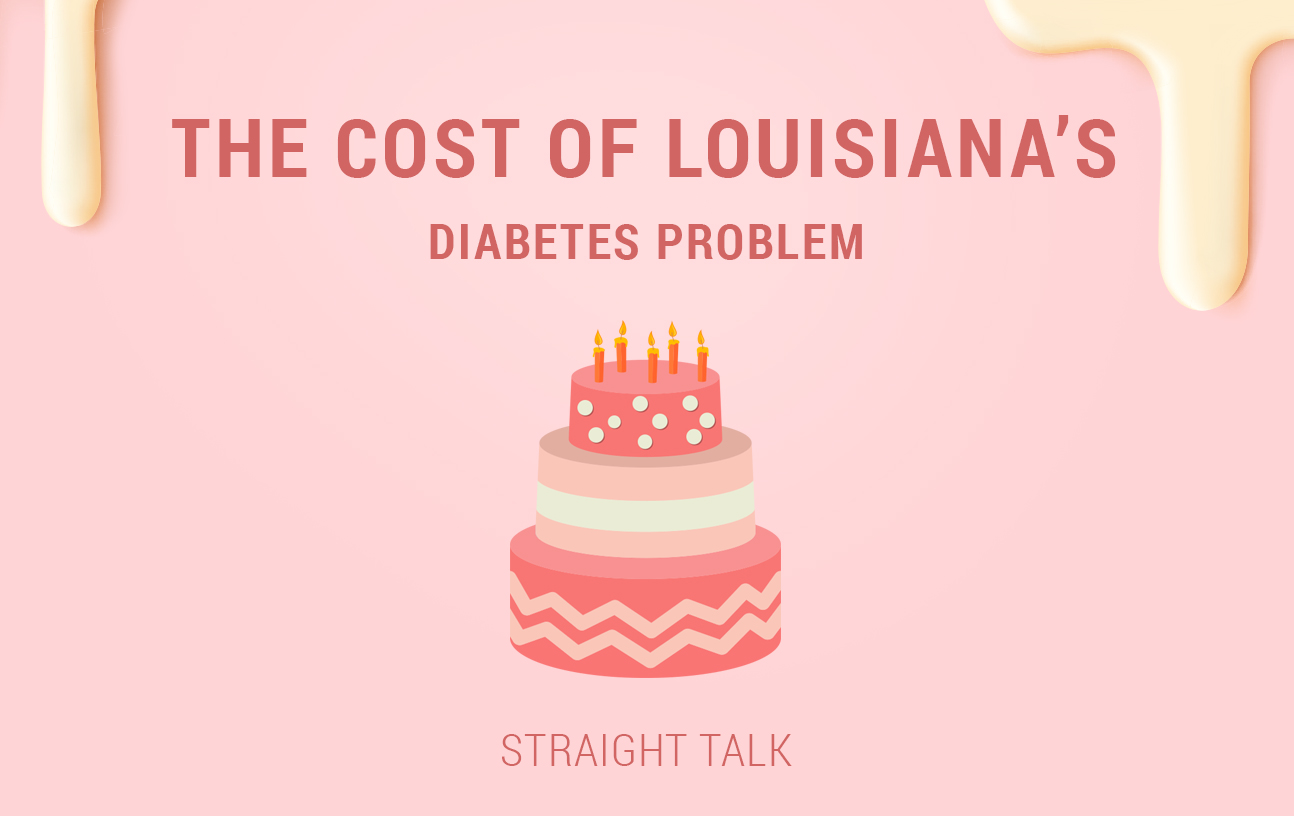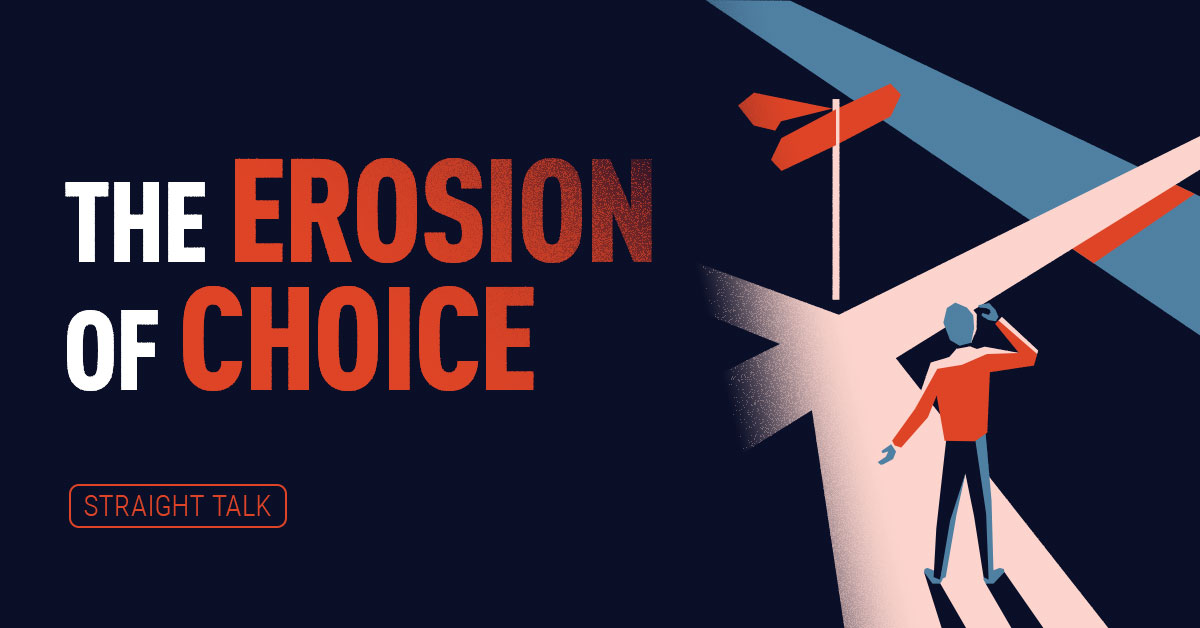When I was a little boy growing up in the 1960s, there was an elderly widow who lived next door to us whom all the kids loved. Miss Elaine had been married to an Army staff sergeant who traveled the world with her in tow. She was a tough cookie! She taught all of us kids to play poker and pinochle (her favorite) and was constantly giving us advice in her raspy, smoky voice (about two packs a day by my recollection).
But, Miss Elaine had a heart of gold. One time, she won the Big Pot at the bingo hall down the street and bought a swimming pool for the neighborhood kids to use. In all the years she had it, I think I saw her in it one time. But, she loved having all of us terrorize her and use her pool. A great and fun lady.
Miss Elaine also had “sugar problems,” as my mom used to say. She had to give herself shots every day because she was diabetic, and, even though we didn’t know what that meant, I couldn’t think of a worse disease than one that made you have to get a shot EVERY SINGLE DAY! Horrible!
Compared to today, Louisiana’s “sugar problems” back then were tiny. Today, we have a full-blown epidemic on our hands. Making matters even worse, the companies that make diabetic medicines are earning a ton of money off of all these sick patients — even on drugs that are very old.
The Story of Insulin
If you have a close friend or family member with diabetes – and sadly, if you live in Louisiana, you probably do – you know that taking insulin is important to stay healthy. In a healthy body, the pancreas makes a hormone called insulin that regulates your blood sugar, or glucose. People with Type 1 diabetes can’t properly make insulin, which leads to their glucose getting out of whack and causing diabetes. They have to take insulin (yes, through shots) to keep their blood sugar levels in a healthy range.
Another type of diabetes, Type 2, is much more common and results in your body becoming immune to the insulin you are already making! Then you have to take medicines to combat this “insulin resistance” and even more insulin to get the job done. Most folks with Type 1 diabetes are born with it. Most folks with Type 2 diabetes gave it to themselves. Ouch!
Naturally occurring forms of insulin (from animals) were discovered and processed by a team of Canadian doctors in 1921. They realized immediately how important their discovery was, and being men of real faith and caring, sold their patents to a university for $1. They said they wanted the entire world to have access to their discovery, regardless of their ability to pay. We sure have changed in our considerations of healthcare.
Check out this chart of the history of insulin pricing:
You’ll notice that for most of its lifetime, insulin actually was going up in price slower than regular old inflation. It really wasn’t until 2000 that insulin prices started to jump up here in the U.S., and now you can see it has just gone crazy. Not so in other countries, where the exact same drug companies that sell it here also do business. We are paying a premium here.
To be fair, it’s important to point out that insulin was strictly animal-derived until the 1980s, when synthetic versions became widely available. And the insulin of 2018 is quite different from the stuff they sold us years ago. It now comes in handy injectors that are carefully measured, and it’s longer lasting, meaning you don’t have to use it nearly as often. It’s also more effective than older forms of insulin.
But, all these changes come at a cost. We’ve seen around a350% price increase in the past decade, right at the same time the population of diabetics (especially Type 2) began exploding.
Louisiana’s Diabetes Problem
So, what does this mean for Louisiana? How about $5 billion in healthcare costs per year in this state ALONE! Nationally, the number is more than $300 billion! Sort of puts that insulin graph above into perspective, doesn’t it? That’s enough to buy more than 150,000 miles of brand new interstate highway! Enough to go from New York to San Diego 50 times! You know how I feel about traffic!
In our state of 4.65 million people, more than 500,000 of them are full-blown diabetics. That’s almost 14% of the state. Experts estimate that around 120,000 of those people have no idea they have diabetes – they are simply walking around destroying their organs with no knowledge of what is happening to them. Most of these same people also have high blood pressure, and high blood sugar plus high blood pressure is a lethal combination to your kidneys. Most kidney failure in the U.S. comes from this exact combination of untreated conditions. It’s also VERY hard on your eyes and eyesight.
But that’s just the beginning…
Another 1.2 million of us have PRE-diabetes. This means our blood sugar is trending upward and our insulin resistance increasing, but hasn’t hit critical levels yet. But it will; the march is inevitable if you don’t change your ways. I’m one of these people – I was diagnosed as pre-diabetic more than 10 years ago. Because I play ball with my docs, take my medicine, try to eat healthier and get some exercise, my blood sugar has been stable for about five years, and I don’t have to take insulin. You can be sure, though, if I had stayed on my same trajectory and not intervened, I would have been full diabetic for these past few years.
What’s Feeding Our Diabetes Problems?
So Mike, what’s changed? We didn’t used to have a lot of people with diabetes.
Great point. I just read a fascinating study about a captive population in Canada, where they were able to isolate a large group of people and study their health histories from 1990 to 2015. In this rather isolated population, Type 2 diabetes increased 120% in just the past 10 years.
The researchers narrowed down the causes to this list:
- Less physical activity
- More obesity
- Less consumption of fruits and vegetables
- Persistent tobacco use rates
- More high blood pressure
- More alcohol consumption
- Aging population (more diabetics living longer)
- Ethnicity
Here in Louisiana, we have VERY high levels of most of these risk factors, too. I’ve written about how our weather and culture discourage physical activity, and our excellent (but usually pretty rich) foods encourage obesity. I think we’d all agree we eat too much fast food and not enough fruits and vegetables. In fact, the more I read about this Canadian study, the more it sounded like us. Like us, their diabetes problems are growing very rapidly.
What’s the Answer?
As with all things, knowledge is power. Have you been to your doctor recently? Had your blood sugar level (it’s called an A1C reading) checked? Do you know if you are pre-diabetic or if you have risk factors to develop diabetes? Do you have a family history of diabetes?
Without this baseline knowledge, you won’t know how to avoid or control diabetes. At some point, you’ve got to go to the doctor and talk about these things. That’s your best starting point.
If your doctor says you are pre-diabetic, talk with him/her about what you can do to lower your risks. If you take small steps like I did when I got the news – take your meds, lose some weight, stop smoking and get more exercise – you just may be able to head it off, like I have (so far). Believe me, with diabetes in my family, I’d much rather eat better and take a couple of pills a day than have to deal with needles like Miss Elaine!
And, for our Blue Cross customers, we have lots of resources to help you with that, from discounted gym memberships to free health coaching with our in-house team of nurses. If you have diabetes, our nurses can work with you to stick to your doctor’s treatment plan, balance your diet and learn good self-care. Let us help you – call 1-800-317-2299 (8 a.m. – 4:30 p.m., M-F) to talk to our care team about options.
Blue Cross is also investing in news ways to treat diabetes, like sponsoring the NOLAHI Diabetes Care Challenge. The winner, a company called Alertgy, demonstrated technology that can actually continuously monitor your blood sugar without touching your blood. But you have to know that you have diabetes first.
The most important thing to remember here is: untreated diabetes can ruin your life, quickly and out of the blue. Don’t let it happen to you.
Get checked. Listen to your docs. Fix the things you can fix and get better! Let’s all band together and get rid of our collective diabetes problem. Miss Elaine would have loved that!






Just a few added comments:
1. Only 5% of diabetics are Type 1
2. Although people may be born with genetic traits for Type 1 diabetics, most are diagnosed by age 14, so technically not a birth.
3. Often people who are progressing to Type 2 diabetes have social or economic barriers to improving their health.
H/T to Miriam E Tucker @MiriamETucker !